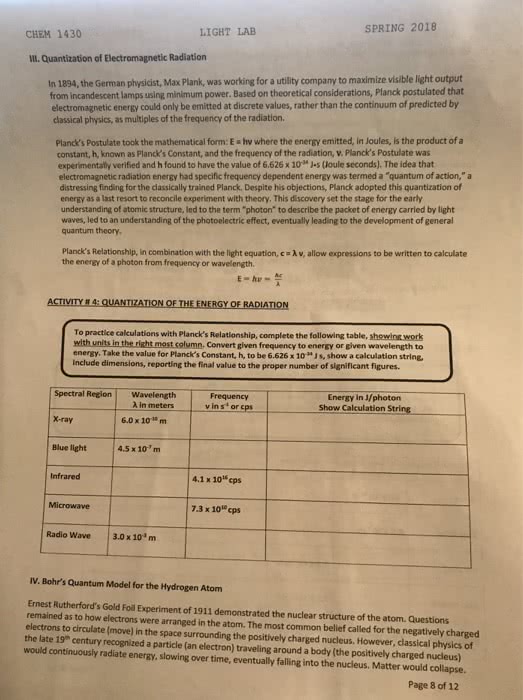CHEM 111 Lecture Notes - Photon, Ernest Rutherford, Cathode Ray
Document Summary
Review: j. thomas cathode rays showed the existence of a particle smaller than the atom, called electrons. Ernest rutherford gold foil experiment showed the atom to be mostly empty space with the positive charge concentrated to the nucleus, electron made up rest of the volume. Simple picture of the atom: particle electrons somehow circled around the nucleus, electron cloud simply constructed. Problems: opposite charges attract, to keep a particle orbiting would take constant energy. Interaction between light and matter began to explain how electrons behave in an atom. Light waves: arranged in a continuum of and , behave as expected for waves (refract, diffract, interfere), c = . How it works: light shining on a metal plate causes current by adding energy to free electrons. #1 any light waves would eventually dislodge an electron. #2 brighter light (higher amplitude) would cause a current sooner. #3 current may not be immediate as the atom stored up the energy from dimmer light.


